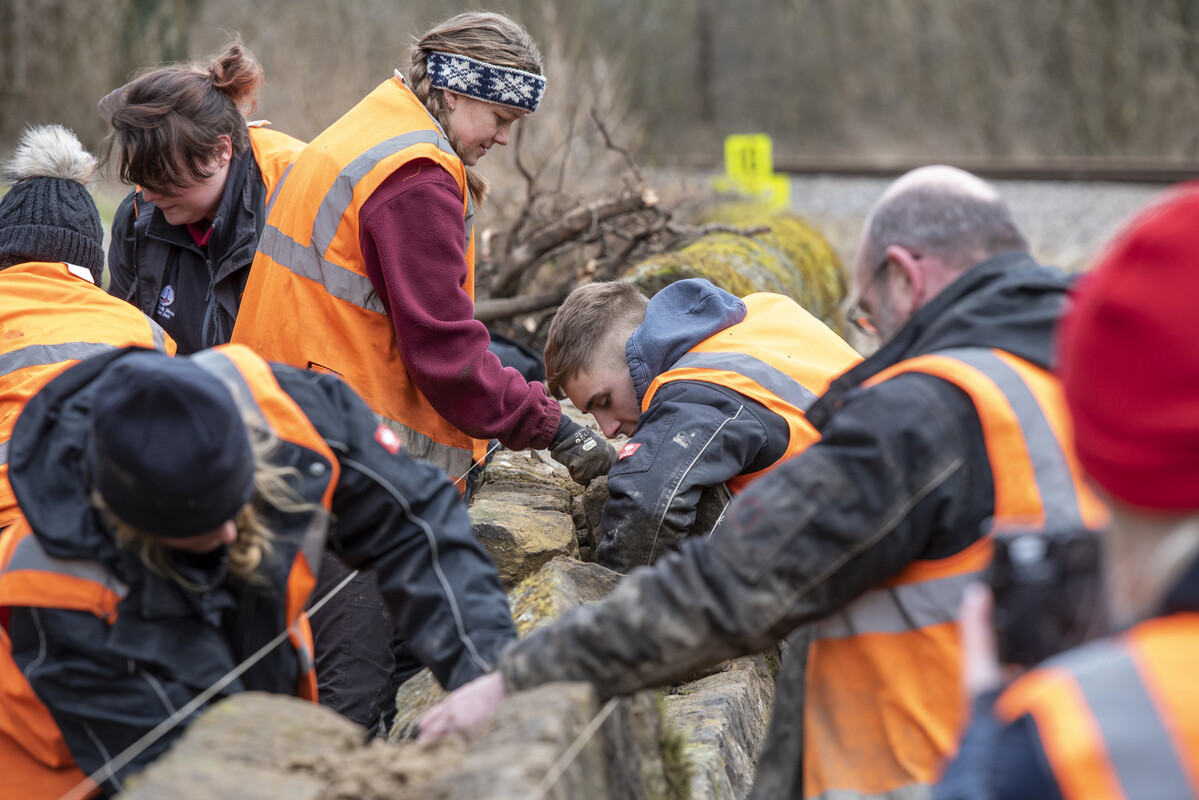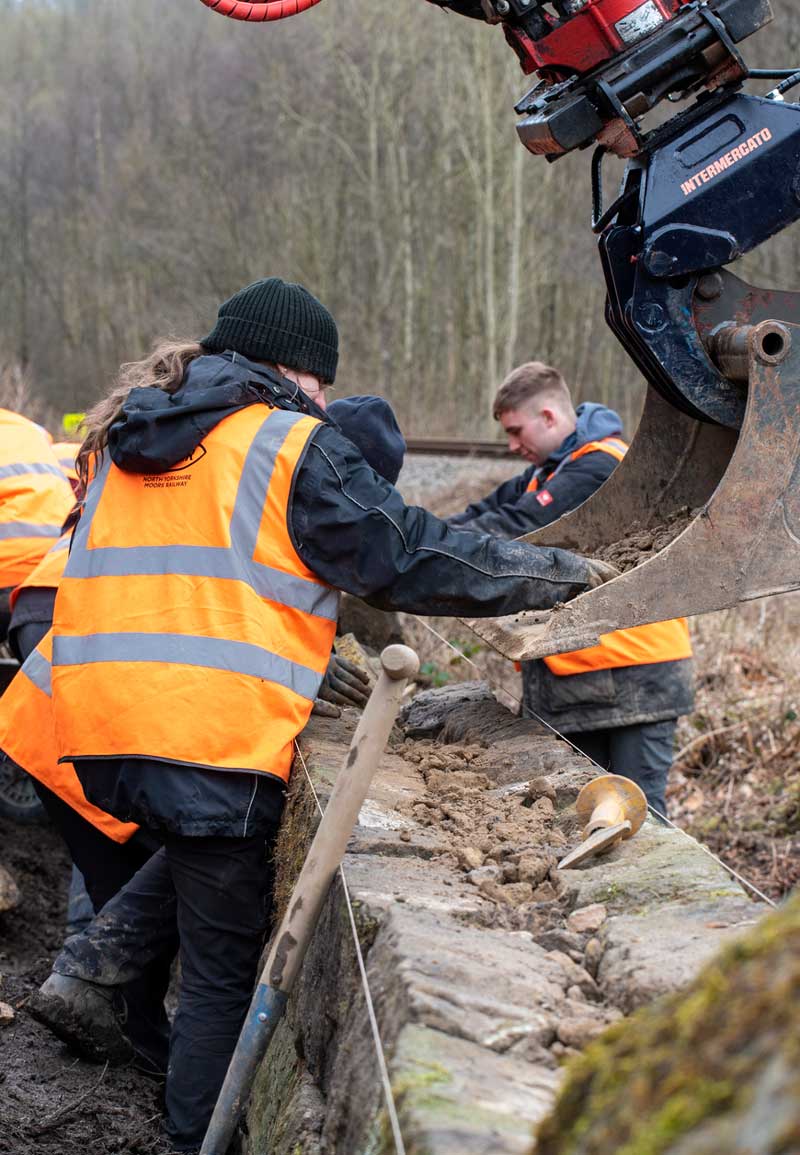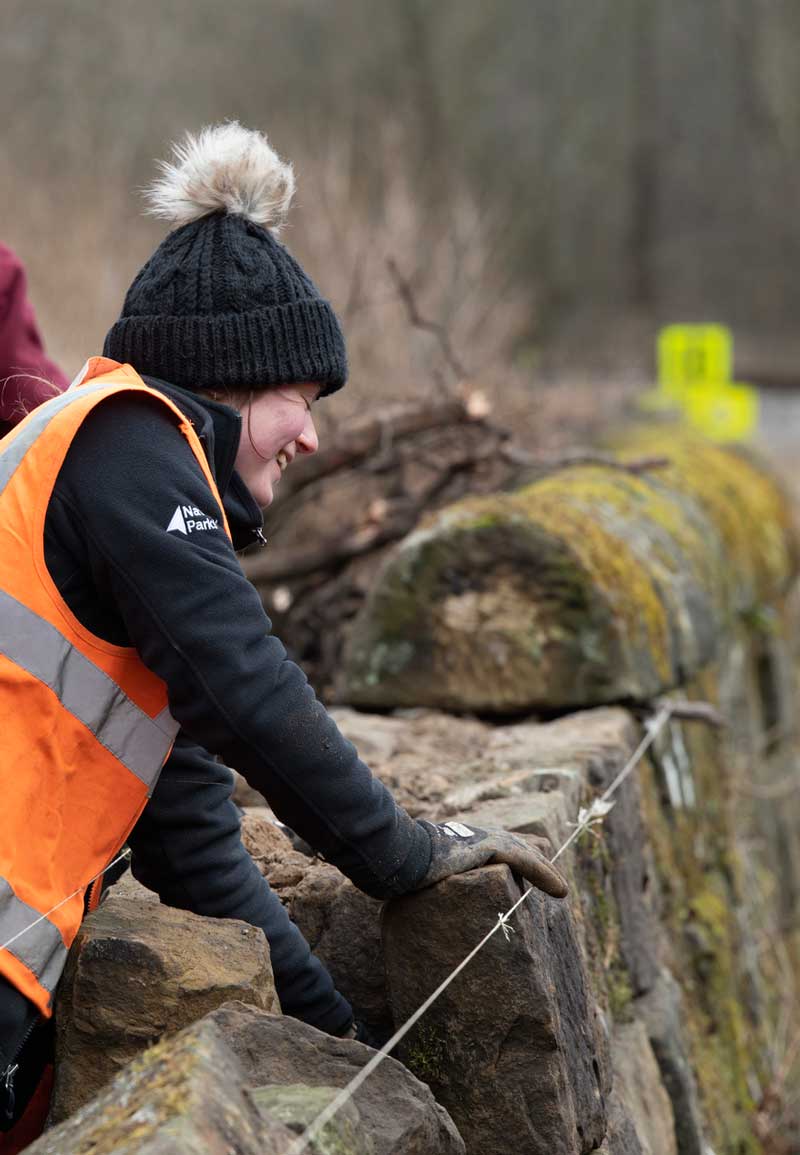Here, Kerry Fieldhouse, Lineside Conservation Officer for North Yorkshire Moors Railway (NYMR), describes how funding from the Traditional Boundary Fund helped restore a much-loved section of their route, known as the Adder Wall.
This project was joint funded using s106 payments from Anglo American to offset the impacts of the Woodsmith Mine development, alongside funding from the National Lottery Heritage Fund as part of the Yorkshire’s Magnificent Journey (YMJ) project.



This 136m stretch of dry stone wall dates back to around 1840, when the railway was being built. It’s made up of sandstone blocks, each one hand-masoned to fit a particular spot. It became known as the Adder Wall, as quite simply it's close to a tight bend in the track and historically train drivers have spotted adders basking on the wall - they’re cold-blooded creatures and need to warm themselves. However, over the years it has been battered by the elements, buckled by tree roots and hit by passing logging lorries – hence the need to restore it.
Over three years our countryside worker apprentices and volunteers have repaired various sections of the wall and it is now complete. It is however not just about rebuilding the wall, but creating a better habitat for adders. Areas of vegetation have also been created so that they can seek refuge from predators, such as buzzards and pheasants.
Management Plan
This projects supports the following Management Plan objective:
 Objective 3: A landscape rich in heritage and highly valued for its sense of remoteness and tranquillity
Objective 3: A landscape rich in heritage and highly valued for its sense of remoteness and tranquillity
Objective 11: Ensure that our historic environment is better understood, conserved, explained and under appropriate management; and work with partners to reduce the number of identified Designated Heritage Assets at Risk.
